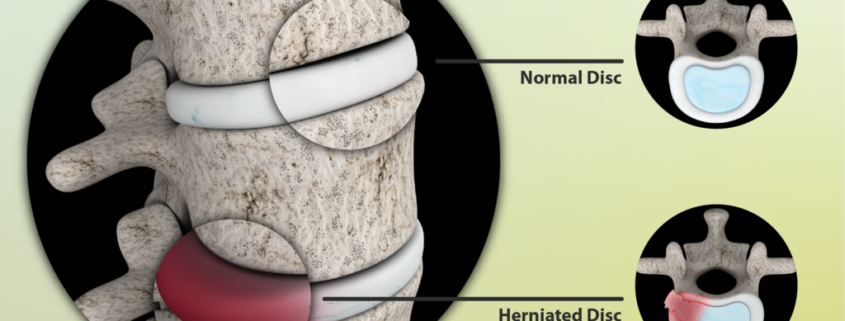
Herniated Disc
Overview
A herniated disc, also known as slipped or ruptured disc, is a common but often painful medical condition that affects the spine. It occurs when the softer, gel-like center of a spinal disc pushes through a crack in the tougher exterior casing. This can compress the nerves around the disc causing pain, numbness, or weakness, usually in the arm or leg. It’s a prevalent condition that affects about 20 to 35% of adults.
Types
Not all herniated discs are created equal. They are usually classified by their location in the spine:
-
- Cervical Herniated Disc: This type occurs in the neck area.
-
- Thoracic Herniated Disc: This takes place in the upper back.
-
- Lumbar Herniated Disc: This, the most common type, happens in the lower back.
Causes
A herniated disc primarily results from disc degeneration – an age-related wear and tear. As you age, your discs lose some of their water content, making them more prone to tearing or rupturing even with a minor strain or twist. Other factors may include:
-
- Physically demanding jobs that require heavy lifting or constant sitting
-
- Smoking, which may reduce the oxygen supply to the disc, leading to rapid degeneration
-
- Being overweight, which adds stress to the discs in your lower back
Symptoms
While some people with herniated discs experience no symptoms, others might encounter:
-
- Pain, commonly in the buttocks, thigh, and calf. It may also extend to the foot.
-
- Numbness or tingling in the body part served by the affected nerves
-
- Muscle weakness
Diagnosis
Diagnosis for a herniated disc starts with a physical exam, where your doctor covers your medical history and symptoms, and performs a neurological examination. This may be followed by imaging tests, such as MRI, X-rays, or CT scans, to confirm the diagnosis and assess the condition’s severity.
Treatment Options
Treatment for a herniated disc depends on its location and severity. However, the most common approaches include:
-
- Medications: Over the counter pain relievers, nerve pain medications, or muscle relaxers.
-
- Therapy: Physical therapy exercises can help manage pain and prevent future injuries.
-
- Injections: In some cases, your doctor might suggest cortisone injections to reduce inflammation around the nerves.
-
- Surgery: If conservative treatments don’t improve your symptoms, surgery may be an option. The procedure typically involves removing the protruding part of the disc or, in rare cases, the entire disc.
Living With A Herniated Disc
Living with a herniated disc can be challenging, but several strategies can help you manage the condition:
-
- Maintain a healthy weight to reduce pressure on your discs.
-
- Exercise regularly to keep your back strong and flexible.
-
- Practice good posture at all times.
-
- Avoid lifting heavy items, but if you must, do it safely with your legs.
When to Seek Help
A herniated disc can get better with time and conservative treatments. However, if you experience severe or worsening symptoms, such as extreme pain, weakness, numbness, tingling, or loss of bladder or bowel control, it’s crucial to seek immediate medical assistance as these may indicate a more serious condition.
